2024..01.01.19
Files > Conference Series > 2024 > Chimboazo ild pagina nueva
Determination of the effectiveness of the electrocoagulation process in the treatment of leachate from the controlled landfill site in Francisco de Orellana canton
1 Independent researcher in environmental sciences, Ecuador
2 Escuela Superior Politécnica de Chimborazo (ESPOCH), Sede Orellana, Coca 220150, Ecuador; [email protected].
3 Grupo YASUNI-SDC, Escuela Superior Politécnica de Chimborazo (ESPOCH), Sede Orellana, Coca 220150, Ecuador; [email protected].
* Correspondence: [email protected]; Tel.: +593 995902280
Available from. http://dx.doi.org/10.21931/RB/2024.09.01.19
ABSTRACT
The inadequate management of leachate produced in landfill sites, sanitary dumps, or its incomplete treatment generates significant environmental and public health impacts. These conditions are expected in developing countries and are a major concern, especially in sensitive areas like the Amazon. This study investigated the efficiency of electrocoagulation for removing BOD5, COD, TSS, turbidity, and color using a laboratory-scale reactor. Samples of raw leachate from the controlled landfill site in Francisco de Orellana canton, located in the Ecuadorian Amazon, were used. First, the initial conditions of the leachate were determined through a physicochemical characterization, where a reduced presence of heavy metals and high biodegradability were identified, suggesting that it is old leachate. In turn, a reactor with 5 electrodes was installed, where aluminum was used as a cathode and iron as an anode. Finally, electrocoagulation was employed with various operational combinations, where a run using 2.5 V and 20 minutes showed the highest removal efficiency on average, with reductions of 85.23% of BOD5, 98.20% of COD, 11.30% of TSS, 96.52% of turbidity, and 90.73% of color.
Keywords: Electrocoagulation; Leachate; Leachate treatment.
INTRODUCTION
The Amazon region, known for its exceptional biodiversity – and for being one of the wealthiest areas in the world in terms of natural resources – faces increasingly pressing challenges in terms of proper solid waste management 1–3. As part of managing these wastes, fluids that seep through the waste are generated, leading to leachate formation. The production of leachate depends on many factors, such as the waste's degree of compaction and the organic matter's initial moisture content, the latter being the main factor contributing to an accelerated generation of leachate 4. Other factors include the cell coating material, precipitation, atmospheric moisture, temperature, evapotranspiration, the field capacity of the landfill, and runoff 5.
Inadequate management of these fluids poses severe environmental problems for remediation due to the high content of organic matter (e.g., carboxylic acids and dissolved solids), toxic chemicals, inorganic salts, heavy metals, ammonia, minerals, and xenobiotic organic compounds 6. In addition, inadequate leachate treatment poses a real threat to local ecosystems, public health, and the preservation of the natural environment 7,8.
Leachate from landfills is grouped into three categories according to its age: young (less than 5 years), intermediate (between 5 and 10 years), and old (more than 10 years), based on how long it has been in the landfill site 9,10. Young leachate from landfills tends to have a BOD/COD ratio greater than 0.5, while old leachate tends to be less than 0.1 11. Because young leachate is highly biodegradable, conventional biological treatment (aerobic, anoxic, or anaerobic) is applied 12. However, intermediate and older leachate requires chemical treatment due to the significant presence of recalcitrant substances 13. The BOD/COD ratio decreases significantly with time, making applying biological treatments to older leachate more complicated. In this scenario, the challenge arises of developing adequate treatment processes for leachate due to variations in their composition and concentration 14.
To date, various techniques have been employed for leachate treatment; however, electrocoagulation has emerged as a promising alternative 15–17, which deserves further analysis in the context of the Ecuadorian Amazon. Electrocoagulation stands out for its ability to remove contaminants, such as heavy metals, organic matter, and other dissolved compounds, through coagulation, flocculation, and precipitation 18–20.
In the local context, there has been a controlled landfill site in operation in Francisco de Orellana canton since 1998, which is why old leachate mainly exists there. In the locality, the leachate is collected and stored in a tank and then transported by suction to a system of several pools, where it is first treated with aluminum sulfate. It subsequently undergoes a phytoremediation process and an oxidation process before being released into the environment.
The main objective of this article was to evaluate and determine the effectiveness of the electrocoagulation process as a viable and sustainable option for treating leachate from this canton's controlled landfill site. An experimental study was carried out to achieve this objective, in which several operational variables of the electrocoagulation process were analyzed. Moreover, the elimination efficiency of specific pollutants in the leachate was measured and quantified by considering both the removal of organic load and the reduced toxicity in the treated effluents.
This research seeks to contribute significantly to scientific knowledge in leachate treatment in the Amazon region, providing relevant information for decision-making in public policies and environmental management strategies. Likewise, the results obtained are expected to encourage the adoption of more responsible and environmentally friendly practices in solid waste management, thus contributing to the conservation and preservation of the Amazon region's invaluable biodiversity.
MATERIALS AND METHODS
Collection of leachate samples
The leachate samples were taken from the storage pool of the controlled landfill in Francisco de Orellana canton, located in the Ecuadorian Amazon. This leachate received no prior treatment apart from the partial sedimentation generated in the pool.
The collected samples were stored in a cooler with a refrigerant to preserve their original characteristics. They were transported to the AqLab and GADPO laboratories in the city of Coca for analysis. In addition, the containers were protected from direct light in a cool environment and sealed to prevent contamination during transport 21.
Analysis and characterization of the leachate
The leachate was characterized by analyzing physical and chemical parameters presented in Tables 1 and 2.
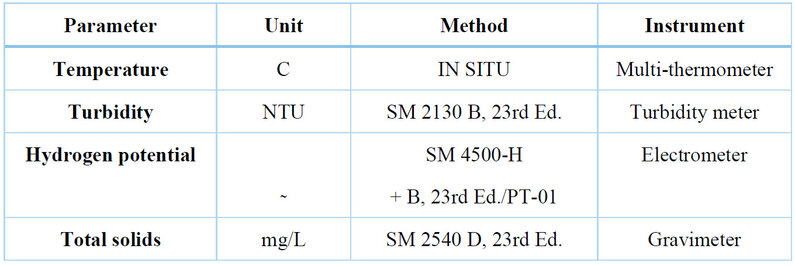
Table 1. Characterization of physical parameters
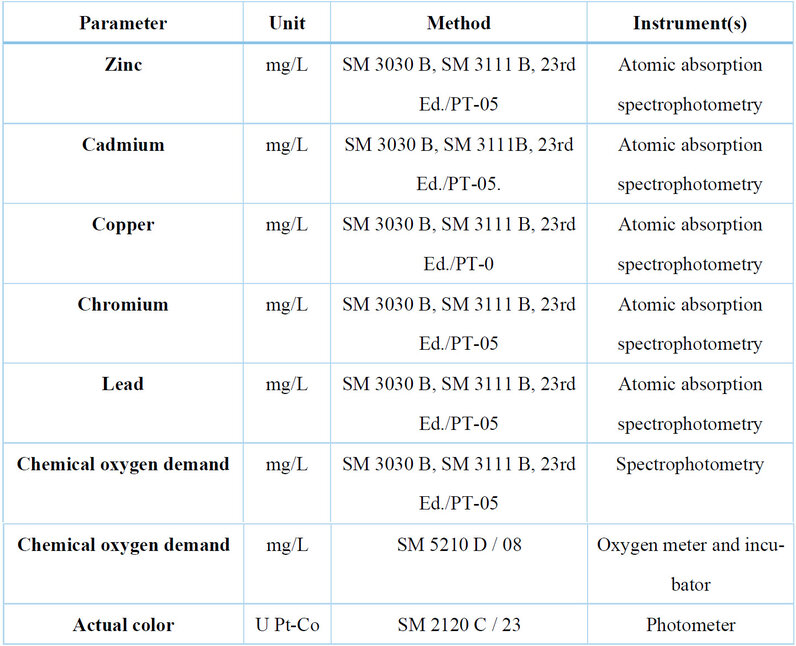
Table 2. Characterization of chemical parameters
Process of design and construction of a laboratory-scale reactor for the electrocoagulation process
Both 22 and 23 indicated in their studies that acrylic glass is an effective electrical insulator in the application of electrocoagulation processes; it is also necessary to consider that this material is low-cost and is available in the market. For this reason, the prototype for the electrocoagulation process with an acrylic glass reactor was designed and constructed.
To determine the volume of the reactor, as recommended by 24, the following Equation 1 was used:
Where:
Vreactor: reactor volume (L)
x = reactor height (cm)
y = reactor length (cm)
z = reactor width (cm)
To determine the number of electrodes, we took what was stated by 23 as a reference. They used a reactor length of 28 cm and a separation distance of 4 cm between the plates, using Equation 2:

Determination of the optimal conditions for the electrocoagulation treatment of leachate
Voltage, time, and amperage were considered to determine the optimum conditions for the electrocoagulation treatment. The operating variables obtained for the electrocoagulation reactor were voltages of 2.5V and 3.0V, with a current intensity of 5 amperes and a reaction time of 15 and 20 minutes. These variables are comparable to the study by Yagual and Revelo 24, who analyzed types of water from leachate using the same variables.

Table 3. Operational variables of the leachate electrocoagulation process
Efficiency of the electrocoagulation process
To determine the efficiency of the electrocoagulation process, the values obtained for the parameters at the beginning of the characterization and after the application of the electrocoagulation process were compared by applying Equation 3:

where:
𝓃: Removal percentage of the parameter analyzed (%)
Initial concentration of the parameter (mg/L)
Final concentration of the parameter (mg/L)
RESULTS
Characterization of leachate from the controlled landfill site in Francisco de Orellana canton
Table 4 shows the results characterizing the raw leachate from the landfill above the site.
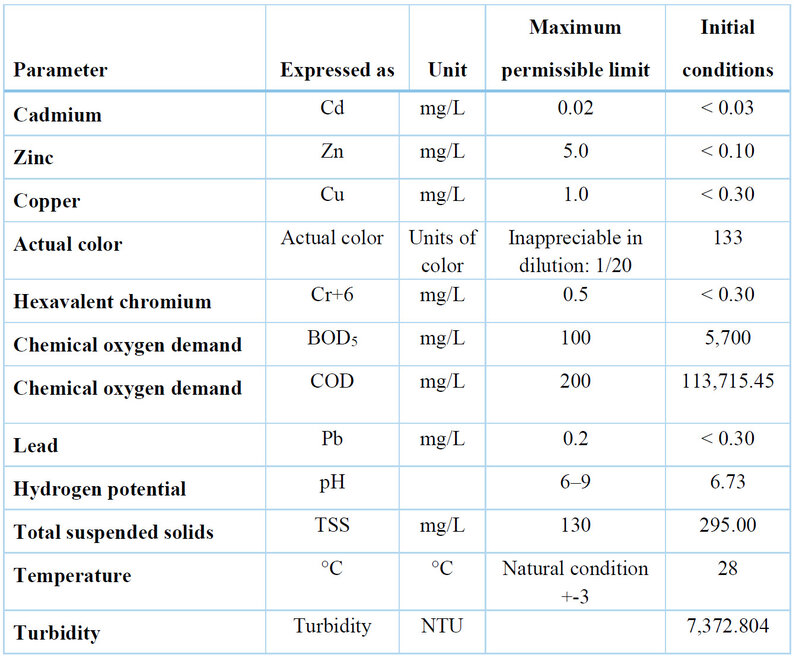
Table 4. Leachate Characterization Results
The results show a high concentration of biochemical oxygen demand, chemical oxygen demand, total suspended solids, turbidity, and actual color. All listed parameters are outside the maximum permissible limits established in current regulations. These values are attributed to the high presence of decomposing, including organic matter, detergent dregs, and other liquids, which mix to form leachate (Torres-Lozada et al., 2014). On the other hand, the presence of heavy metals is deficient.
Design and construction of the prototype for the electrocoagulation process
Reactor dimensions and volume
The acrylic glass reactor was constructed with the following dimensions: 21cm wide, 28cm long, 11cm tall, and a thickness of 2mm, as shown in Figure 1. These measurements were taken from the research by Reyes and Bermeo 23.
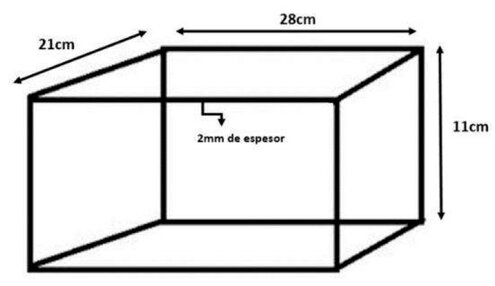
Figure 1. Reactor dimensions
Furthermore, considering the dimensions above, the reactor's volume was 6.5 liters.
Number of electrodes
Similarly, the number of electrodes calculated was 5, where 3 serve as cathodes (aluminum) and 2 as anodes (iron), as shown in Figure 2.
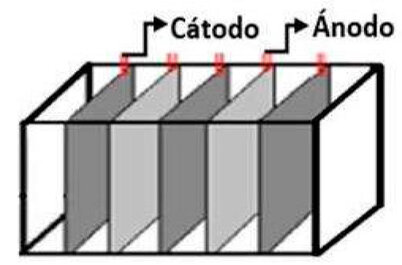
Figure 2. Number of electrodes
Finally, the laboratory-scale reactor was installed in the primary and specialized science laboratory of the Escuela Superior Politécnica de Chimborazo (ESOCH), Orellana campus, as shown in Figure 3.
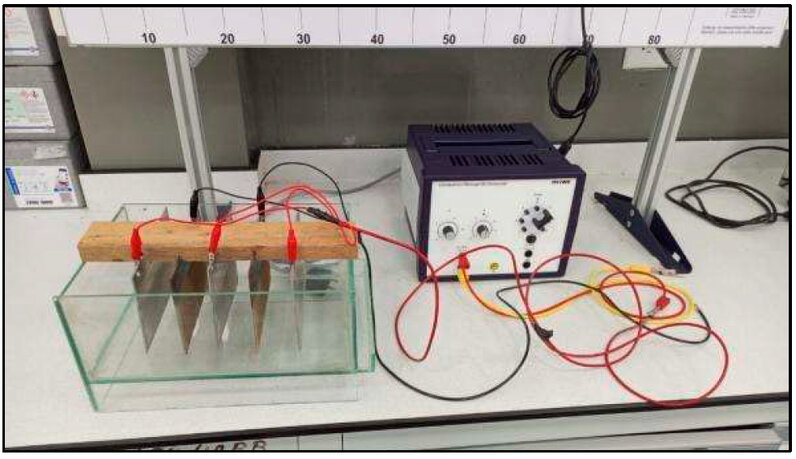
Figure 3. Final reactor prototype.
The installation had a power source of 5 amperes and 15 volts, 5 plates or electrodes (3 aluminum and 2 iron), an acrylic glass reactor, and a black wire for the positive charge and red wire for the negative charge, designed to achieve a better conductivity of electricity.
Effectiveness of the electrocoagulation process
Below is the behavior of the parameters examined in the electrocoagulation process by considering the times and voltages used in the experimental tests.

Table 5. Detailed results after electrocoagulation
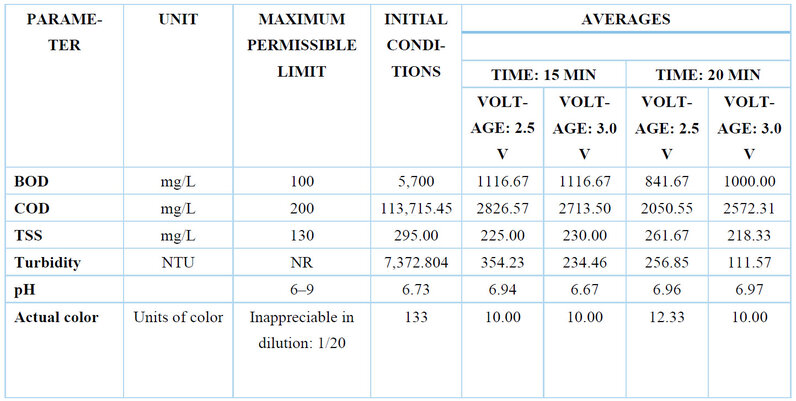
Table 6 shows the average performance of the elimination process for each parameter.
Efficiency of the electrocoagulation process for the treatment of leachate
The efficiency of the electrocoagulation process developed at a laboratory scale is shown in Table 7.
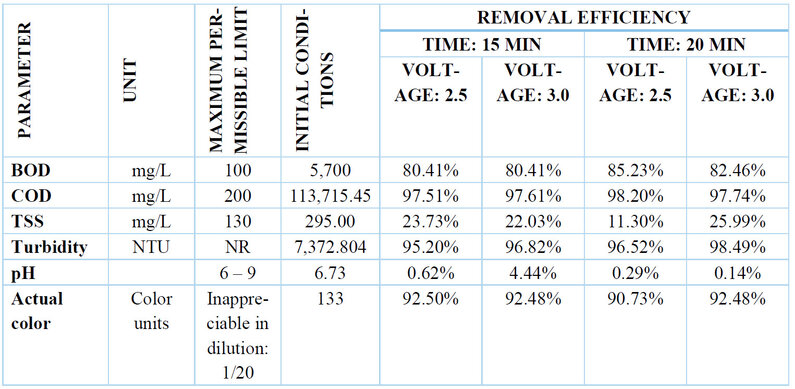
Table 7. Removal efficiency of the electrocoagulation process
DISCUSSION
During the initial diagnosis of the contaminant load of the leachate analyzed, it was determined that the concentrations of heavy metals were low, falling below the maximum permissible limits established by Ecuadorian regulations. Heavy metal concentration levels are influenced by the composition of the buried waste and by the age of the leachate 28–30, the latter being the primary condition in this study.
The results obtained for BOD5 and COD show a non-biodegradable fluid since the BOD5/COD biodegradability index is less than 0.3. This suggests that it is an old leachate 31,32, as aforementioned. Similarly, TSS and turbidity show high values – 295 mg/L and 7,372.8 NTU, respectively – which agrees with other studies in the country 33.
Regarding treatment efficiency, high reductions of both BOD and COD were obtained, reaching removal percentages of 85.23% and 98.20%, respectively. This high efficiency has also been found in several other laboratory-scale studies 9,20.
Currently, electrocoagulation is combined with various advanced oxidation processes such as peroxide-coagulation 34, sulfate radical-based advanced oxidation process (SR-AOP) and electro-Fenton (EF) 35, and electrooxidation (EO) and peroxymonosulfate (PMS)/UV/CuFe2O4 20. Equally, the change in polarity from anode to cathode presents significant results 36. This presents a valuable opportunity for further research into the most efficient option for each operating condition.
The operating variables obtained for the electrocoagulation reactor with voltages of 2.5V and 3.0V, a current intensity of 5 amperes, and a reaction time of 20 minutes are in line with previous studies, such as the analysis of water types from leachate by Yagual and Revelo 24, where high removal efficiencies were also obtained.
CONCLUSIONS
The physicochemical properties of the leachate from the controlled landfill site in Francisco de Orellana canton showed concentrations of color of 133 Pt/Co, biological oxygen demand of 5,700 mg/L, chemical oxygen demand of 113,715.45 mg/L, total suspended solids of 295 mg/L, and turbidity of 7,372.804. These are outside the maximum permissible limits set down by current TULSMA (Ecuadorian Environment Ministry's Unified Text of Secondary Legislation or Texto Unificado de Legislación Secundaria del Ministerio del Ambiente) regulations in Book VI, Table 9. Heavy metals were found within the maximum permissible limits due to the nature of the waste in the study area and the age of the leachate.
For the design and construction of the prototype, calculations were made to establish reactor dimensions, reactor volume, number of electrodes, and electrode dimensions for the electrocoagulation process of the leachate. The optimum conditions in the electrocoagulation treatment for leachate were a voltage of 2.5 and 3.0 V and a time of 20 minutes for the reduction of 5 parameters: biochemical oxygen demand, chemical oxygen demand, total suspended solids, turbidity, and actual color.
The efficiency of the applied method is evidenced in the percentages of pollutant removal obtained. Specifically, with a voltage of 2.5 V and a time of 20 minutes, these were 85.23% for biochemical oxygen demand and 98.20% for chemical oxygen demand. Meanwhile, a higher voltage (3.0 V) and the same period resulted in removals of 98.49% for turbidity, 92.48% for actual color, 25.99% for total suspended solids, and 13.21% for temperature.
REFERENCES
1. de Oliveira, B. O. S., de Medeiros, G. A., Mancini, S. D., Paes, M. X. & Gianelli, B. F. Eco-efficiency transition applied to municipal solid waste management in the Amazon. J. Clean. Prod. 373, 133807 (2022).
2. Bernardes, C. & Günther, W. M. R. Generation of domestic solid waste in rural areas: case study of remote communities in the Brazilian Amazon. Hum. Ecol. 42, 617–623 (2014).
3. Diéguez-Santana, K., Sarduy-Pereira, L. B. & De Decker, M. Characterization and Quantification of Municipal Solid Waste in Fátima, Ecuadorian Amazon Parish. J. Environ. Treat. Tech. 9, 392–401 (2021).
4. Caiza, D., Chimbo, A., Sarduy Pereira, L. B., Pisco, W. & Diéguez Santana, K. Propuesta de producción más limpia en el proceso de elaboración de abonos orgánicos con desechos del camal, realizado en el relleno sanitario del cantón Baños de Agua Santa, provincia de Tungurahua. (2018).
5. Brennan, R. B. et al. Management of landfill leachate: The legacy of European Union Directives. Waste Manag. 55, 355–363 (2016).
6. Nanda, S. & Berruti, F. Municipal solid waste management and landfilling technologies: a review. Environ. Chem. Lett. 19, 1433–1456 (2021).
7. Flores, C. A. R., da Cunha, A. C. & Cunha, H. F. A. Solid waste generation indicators, per capita, in Amazonian countries. Environ. Sci. Pollut. Res. 29, 33138–33151 (2022).
8. Arenhardt, V., Pedro Filho, F. de S., Schalch, V., Manthey Benevides, S. L. & de Souza, S. B. Waste Management In The Amazon And The Conceptual Innovation Of Sustainability. J. Solid Waste Technol. Manag. 45, 329–339 (2019).
9. Nidheesh, P. V, Murshid, A. & Chanikya, P. Combination of electrochemically activated persulfate process and electrocoagulation for the treatment of municipal landfill leachate with low biodegradability. Chemosphere 338, 139449 (2023).
10. Kow, S., Fahmi, M. R., Abidin, C. Z. A. & Soon‐An, O. Advanced oxidation processes: process mechanisms, affecting parameters and landfill leachate treatment. Water Environ. Res. 88, 2047–2058 (2016).
11. Wu, R., Li, Y.-Y. & Liu, J. Refractory dissolved organic matter as carbon source for advanced nitrogen removal from mature landfill leachate: A review and prospective application. J. Clean. Prod. 134962 (2022).
12. Tałałaj, I. A., Biedka, P. & Bartkowska, I. Treatment of landfill leachate with biological pretreatments and reverse osmosis. Environ. Chem. Lett. 17, 1177–1193 (2019).
13. Da Costa, F. M., Daflon, S. D. A., Bila, D. M., da Fonseca, F. V. & Campos, J. C. Evaluation of the biodegradability and toxicity of landfill leachate after pretreatment using advanced oxidative processes. Waste Manag. 76, 606–613 (2018).
14. Brennan, R. B., Clifford, E., Devroedt, C., Morrison, L. & Healy, M. G. Treatment of landfill leachate in municipal wastewater treatment plants and impacts on effluent ammonium concentrations. J. Environ. Manage. 188, 64–72 (2017).
15. Othmani, A. et al. A comprehensive review on green perspectives of electrocoagulation integrated with advanced processes for effective pollutants removal from water environment. Environ. Res. 114294 (2022).
16. Amusa, A. A., Taib, M. R. & Xian, W. Z. Continuous Flow Electrochemical Process for Sanitary Landfill Leachate Treatment: Role of Inlet Flow Rate and Current Density. Water, Air, Soil Pollut. 234, 488 (2023).
17. Gautam, P., Kumar, S. & Lokhandwala, S. Advanced oxidation processes for treatment of leachate from hazardous waste landfill: A critical review. J. Clean. Prod. 237, 117639 (2019).
18. Guo, Z. et al. Electrochemical methods for landfill leachate treatment: A review on electrocoagulation and electrooxidation. Sci. Total Environ. 806, 150529 (2022).
19. Núñez, J. et al. Operational variable effect on the COD removal efficiency using electrocoagulation in landfill leachate treatment. Environ. Sci. Water Res. Technol. 9, 781–793 (2023).
20. Ghanbari, F., Wu, J., Khatebasreh, M., Ding, D. & Lin, K.-Y. A. Efficient treatment for landfill leachate through sequential electrocoagulation, electrooxidation and PMS/UV/CuFe2O4 process. Sep. Purif. Technol. 242, 116828 (2020).
21. Norma Técnica Ecuatoriana NTE INEN 2687. Mercados saludables. Requisitos. Serv. ecuatoriano Norm. 1, 21 (2013).
22. Reyes Ávila, D. & Mercado Martínez, I. D. Estudio de tratabilidad por electrocoagulación de los lixiviados del relleno sanitario La Esmeralda. Ing. Química (2003).
23. Callejas Herández, J., Prieto García, F., Reyes Cruz, V., Marmolejo Santillán, Y. & Bustos, B. Optimización del proceso de electrocoagulación de un lactosuero ácido con recuperación de fósforo. VI Encuentro Investig. del Área Académica Ciencias la Tierra y Mater. 77–92 (2013).
24. Revelo Anaguano, D. A. Diseño de un sistema de electrocoagulación para tratar aguas residuales de una industria de insumos médicos. at (2021).
25. Torres-Lozada, P., Barba-Ho, L. E., Ojeda, C. & Martínez, J. Influencia de la edad de lixiviados sobre su composición físico-química y su potencial de toxicidad. Rev. UDCA Actual. Divulg. Científica 17, 245–255 (2014).
26. Guanoluisa Acero, L. J. Diseño de un sistema de tratamiento de lixiviados del relleno sanitario El Inga mediante electrocoagulación y fitorremediación. at (2012).
27. Guevara, A., Guanoluisa, L. & de la Torre, E. Diseño de Sistemas de Tratamiento de Lixiviados del Relleno Sanitario. Rev. Politécnica 34, 1 (2014).
28. Pasalari, H., Farzadkia, M., Gholami, M. & Emamjomeh, M. M. Management of landfill leachate in Iran: valorization, characteristics, and environmental approaches. Environ. Chem. Lett. 17, 335–348 (2019).
29. Hussein, M., Yoneda, K., Mohd-Zaki, Z., Amir, A. & Othman, N. Heavy metals in leachate, impacted soils and natural soils of different landfills in Malaysia: An alarming threat. Chemosphere 267, 128874 (2021).
30. Kjeldsen, P. et al. Present and long-term composition of MSW landfill leachate: a review. Crit. Rev. Environ. Sci. Technol. 32, 297–336 (2002).
31. Santin-Gusman, M., Moreno-Andrés, J., Cisneros-Abad, M. & Aguilar-Ramírez, S. Optimization for fenton process in removal of COD for landfill leachate treatment. Int. J. Environ. Sci. Dev. 6, 920 (2015).
32. Banchon, C., Cañas, R., Baldeón, H. & Córdova, A. Coagulation and oxidation strategies for landfill leachate wastewater. (2022).
33. Vallejo, M. V. P. & Cahueñas, N. P. P. Treatment of mixed leachate type I and type III by filtration and chemical oxidation. Rev. Investig. Talent. 10, 79–89 (2023).
34. Simon, S., Suresh, B. K. & Anantha-Singh, T. S. A sequential aerated electrocoagulation and peroxicoagulation process for the treatment of municipal stabilized landfill leachate by iron and graphite electrodes. Chemosphere 139692 (2023).
35. Kashani, M. R. K. et al. Sequential treatment of landfill leachate by electrocoagulation/aeration, PMS/ZVI/UV and electro-Fenton: Performance, biodegradability and toxicity studies. J. Environ. Manage. 338, 117781 (2023).
36. Sanei, E. & Mokhtarani, N. Leachate post-treatment by electrocoagulation process: Effect of polarity switching and anode-to-cathode surface area. J. Environ. Manage. 319, 115733 (2022).
Received: October 9th 2023/ Accepted: January 15th 2024 / Published:15 February 2024
Citation: Cumbicus C, Hurtado M, Coello J, Peñafiel-Arcos P, Alexandra Orejuela-Romero J, Barahona M. Determination of the effectiveness of the electrocoagulation process in the treatment of leachate from the controlled landfill site in Francisco de Orellana canton. Revis Bionatura 2024; 9 (1) 19. http://dx.doi.org/10.21931/RB/2024.09.01.19
Additional information Correspondence should be addressed to [email protected]
Peer review information. Bionatura thanks anonymous reviewer(s) for their contribution to the peer review of this work using https://reviewerlocator.webofscience.com/
All articles published by Bionatura Journal are made freely and permanently accessible online immediately upon publication, without subscription charges or registration barriers.
Bionatura ISSN. First 13909355 Ecuador. Scopus coverage years: from 2016 to the present
Publisher's Note: Bionatura stays neutral concerning jurisdictional claims in published maps and institutional affiliations.
Copyright: © 2023 by the authors. They were submitted for possible open-access publication under the terms and conditions of the Creative Commons Attribution (CC BY) license (https://creativecommons.org/licenses/by/4.0/).
